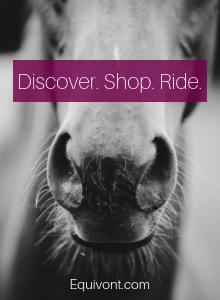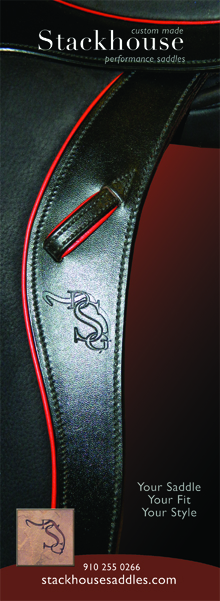Search the Site
Brianna's Blog Post # 5: The Back up plan
I recently got to attend a favorite event of mine, Equine Affair, (if you haven't gone you're missing out!) which holds tons of clinics for every discipline from sidesaddle and gaited to reining and dressage. It also has hundreds of vendors to window shop or, if you have money, actually shop! During my time at equine affair I got to sit in on a “equine back” clinic presented by Stephanie Reinhold, on how to keep your horses back healthy and how to prepare it for work plus how the horses back works in general. This particular topic is always of interest to me as my beloved OTTB is constantly dealing with back issues which call for chiropractic work and message (I know he loves his masseuse more than me).
Then Stephanie began by explaining how the horse is not as perfect for riding as we all assume they are. She started off with the “Natural Horse” as in the horse in the wild...without us. She happily showed how the horse worked perfectly in that setting and did not need to bend or flex or do anything that we ask them to do under saddle. The horses back simply lowered their head to graze and supported the weight of the horse. This caught my attention, simply because its true. Without us the horse is perfectly fine. He doesn’t have back issues because theres not 150 - 200 pounds and or more flopping around on his back asking him to do things he would not do on his own or care to do for the length of time that we often ask for. Then she began to show the domesticated horse. She showed how we ask the horse to bend and use himself unnaturally to compensate for our weight on his back. This, she announced, is not natural and this is why we have back issues.
The domesticated horse is asked to use his back in a way that it is not designed to be used. We ask him to hold his head and neck up and round his back while carrying weight. We ask that they bend and stay straight. Which, as I learned in the clinic, horses are not naturally straight. Straightness and bending are all for the compensation of the rider. Our weight alone puts tremendous pressure on their back.
The speaker went on to explain that the horses back is a suspension bridge which should swing in a locomotion manner. This motion is contrary to the way humans walk. Humans walk straight and have no need to swing in our movement. Thus when you put us on top of the horse we do not naturally follow the motion of the horse. Our weight pushes down and prevents the horse from grasping a proper swing especially in the walk. I remembered being told to swing my hips while riding in the free walk. Now I understand why we should allow our hips to move side to side and get a bit of a “swagger” to our motion when we work in the walk.
Throughout the clinic I truly realized how fragile our horses backs are. The back of a horse is simply not born for the demands of a rider. As riders we need to understand the way our horse works before we start to ask for something. Understanding the brain of a horse is only half the battle. The other half is understanding the body of the horse. Another piece of advice, offered by the clinician, to help the horse was to help ourselves. Help yourself be balanced, supple, and relaxed before you ever saddle up. Stand on one leg as you brush your teeth and stretch out before you go riding and even stretch while your riding. All of these little self building exercises will help your horse and his back support you and your demands.
Finally, the speaker spoke of saddle position. She explained that the weakest part of the horses back is after the last rib and before the point of hip. This particular spot is lacking support from the bone structure of the horse. There is nothing to help hold the weight of the horse and our weight. So if your saddle stretches past the last rib you are putting stress on the weakest link. Saddle fit is a tricky thing to explain but one piece of information I remember from the speaker was to insure that your saddle flared out to accommodate the shoulders. Otherwise it puts extra pressure on the shoulder which needs the ability to move freely.
One final note to add, which I learned from a Hanoverian inspector who was approving my own mare, is to take a look at your horses back. The more obtuse angle created from top of withers to back is better. If your horse's withers and back blend smoothly from one to the other than your horse is better built to carry you. If you have a horse like my TB, who’s wither to back transition looks like the highest drop on a roller coaster than your horses back is taking more of a pounding. (Good Back example in GREEN, Not so good back example in RED)
Simply consider the fragility of your horses structure and do everything you can to understand it and aid it in its effort to accommodate your needs. Put in the money for a chiropractic work, massage, properly fit saddle, and the time to prepare yourself and your horse through stretching. Because all in all the horse is working for you, you should also be working for your horse!






